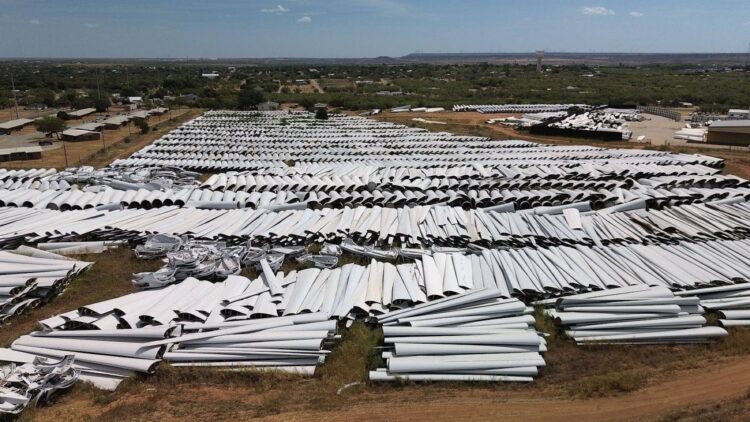A Penn State undergraduate student solved a hundred-year-old wind energy mathematical equation. The discovery has the chance to transform wind turbine efficiency levels while dismantling commonly accepted wind power misconceptions. This detailed research examines how the student achieved a century-old breakthrough in renewable energy mathematics and what this means for future generations of green energy technology.
The century-old equation
Scientists and engineers trying to understand wind energy field operations have encountered the same mathematical equation for one hundred years. The mathematical expression stands as a fundamental principle in wind turbine energy research because it defines turbine efficiency. Past technology limitations, combined with the complex nature of the equation, prevented researchers from achieving total application and understanding of the phenomenon.
A Penn State student achieved both equation simplification and a solution for this complicated formula through innovative ideas and modern computational systems. This discovery authenticates a century-deep mystery related to wind energy while enabling future improvements for wind turbine optimization. The student’s research depicts the connection between established mathematical frameworks and modern technological systems.
Implications for wind turbine efficiency
This refined mathematical expression benefits wind turbine design and operational elements. It provides better explanations about what affects turbine efficiency, enabling improvements in both efficiency and cost-effectiveness of wind energy systems. The discovery holds prospects for changing renewable energy technology.
Enhancing turbine design
Engineers can improve wind turbine design for maximum efficiency through their newly learned understanding. Engineers improve blade elements and turbine operation by modifying blade shapes and sizes and choosing materials while enhancing placement approaches. Advanced wind power systems enhance both power generation and operational savings, making wind energy a stronger competitor in the market.
Challenging long-held beliefs
The recent student achievement disproves historical misconceptions regarding wind power limitations. People previously thought that wind energy contained essential inefficiencies that proved unfixable. The newly discovered definition of this century-old formula demonstrates how to tackle existing wind power restrictions, leading to enhanced operational efficiency.
The revolutionary discovery has proven that wind turbines still have more efficiency potential. The improved equation proves that additional possibilities exist for turbine advancement and operational innovations. The discovery breaks the assumption that wind power presents fixed limits, which reduces barriers to its future growth.
The discovery provides effects that transcend direct wind turbine design efficiency improvements. This development marks important progress in renewable energy research and the need for continuing innovation. A more sustainable future requires such breakthroughs to determine its energy system design.
Continued research and development
According to the outcome demonstrated by this student project, renewable energy research and development need urgent attention. Research engineers and scientists need to use this discovery as a foundation to optimize wind energy system components. The solution to worldwide energy problems and the creation of a sustainable future requires sustainable innovation.
Through his breakthrough at Penn State, the student achieved an important advancement by improving the calculations from the early 1900s that redefined wind energy science. This accomplishment reveals unknown truths about turbines while affirming traditional wind energy wisdom, which together pave the way for forthcoming renewable energy development. A new generation emerges as we leave behind the wind power restrictions that await us.
The accomplishment proves that multiple branches of expertise need to work together to tackle complex scientific challenges. Through their joint knowledge from mathematics, engineering, and computer science, the student completed a decades-long research objective. The project showcases a joint research method that researchers should follow for future renewable energy studies and related scientific investigations. This project demonstrates the investment value in education and research institutions because they create conditions for innovation and solutions to global challenges.


